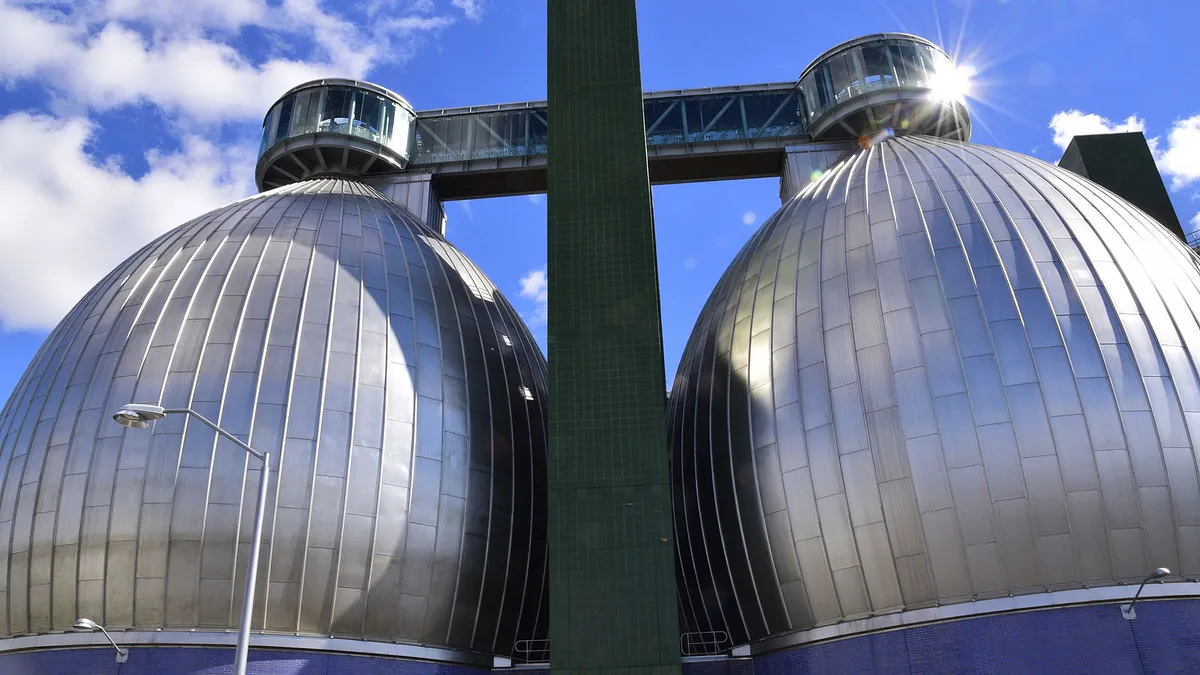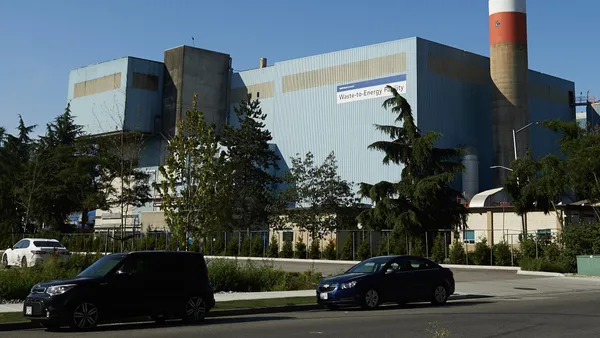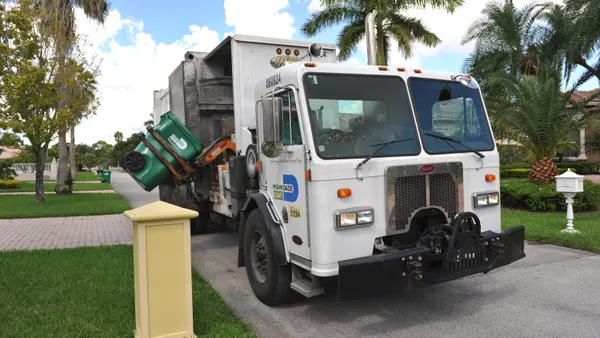Dive Brief:
- The American Biogas Council (ABC) and Water Environment Federation (WEF) have renewed a memorandum of understanding to continue working together for the advancement of converting organic waste into biogas and soil products, according to a press release.
- Both ABC and WEF are working to change the existing terminology of "wastewater treatment plant" to "water resource recovery facility," in recognition of the additional functions more facilities are beginning to perform. According to the press release, about 1,300 of the current 2,200 biogas facilities in the U.S. are at water facilities. It's estimated that an additional 4,000 water facilities could also be upgrade to produce biogas.
- The two organizations also reaffirmed a shared statement of principles to promote expansion of biogas technologies, advance the use of biosolids and advocate for supportive legislation.
Dive Insight:
ABC and WEF announced their initial MOU in 2014. While the basics of their agreement haven't changed, the level of interest in capturing biogas from organic materials, like food scraps, has increased rapidly. This may still be considered new territory for some water treatment facility operators, and could be viewed as tangential to their core mission of ensuring sewage is handled safely, but also presents opportunities to better utilize the resources they're already processing.
Patrick Serfass, executive director of ABC, told Waste Dive that one of the most direct benefits is reducing energy costs for water facilities — which are often some of the highest in municipalities — by capturing more value from the material being digested. Putting these systems in place can also increase the value of biosolids by expanding opportunities for beneficial reuse. In recognition of this expanding conversation, WEF recently released a new publication on biosolids recovery and ABC launched a digestate certification program.
A growing number of major cities around the country have adopted this approach, or at least begun exploring it, in recent years. As the demand for food scrap diversion and renewable energy grow in tandem more municipalities can be expected to follow.














